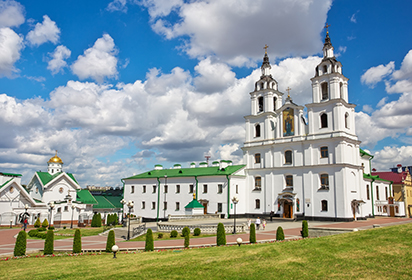Written by Bradt Travel Guides
Most capitals of the world are characterised by a high level of ambient noise and a jumble of activity wherever you look. Not so Minsk. For a city of nearly two million people, the atmosphere is universally calm. Wherever you meander, vast and sweeping panoramas unfold before your gaze, all with a host of different sights. At times it feels you can stroll for ages in areas of parkland and not see another soul, but without feeling nervous in the process.
Almost completely destroyed by the Nazis in World War II (still referred to in the former Soviet republics as the ‘Great Patriotic War’), Stalin ordered Minsk to be rebuilt after the conflict ended in a manner that would stand as a testament to the rest of the world of the might, resilience and ingenuity of Soviet communism. As such, it remains the best example of post-war Soviet urban planning on a grand scale (and the only one of the western Soviet republics’ capital cities largely untainted, for now, by Western commercialism, though the balance is tipping ever more quickly). Herein lies its appeal and idiosyncrasy, for after a short while here you begin to realise that it is unlike any other capital city that you have visited before.
And, with the announcement of a new 30-day visa-free regime for visitors to the capital, there has never been a better time to visit. Here’s what we think you shouldn’t miss on a short break to the city.
Nyezalyezhnastsi (Independence) Square
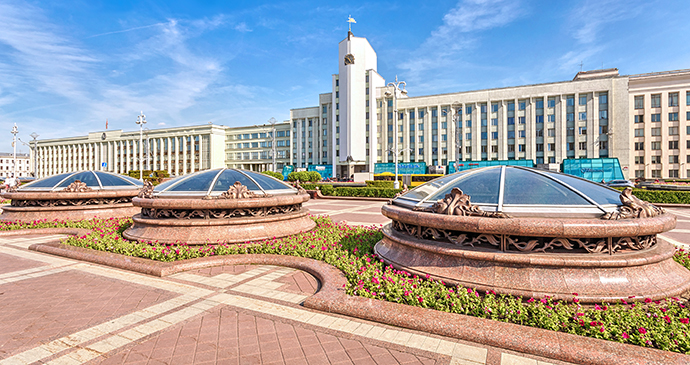
The sense of space and air at this central square is breathtaking. A number of pre-war Stalinist buildings survive and of course there is also yet another imposing statue of Lenin, master of all he surveys. The best panoramic view of the square can be seen through the arch in Leningradskaya Street, when the buildings on the north side, dominated by the House of Government (with Lenin in the foreground) and the red Catholic Church of St Simeon and St Helena, stand open to the eye in all their glory.
Belarusian State Museum of the History of the Great Patriotic War
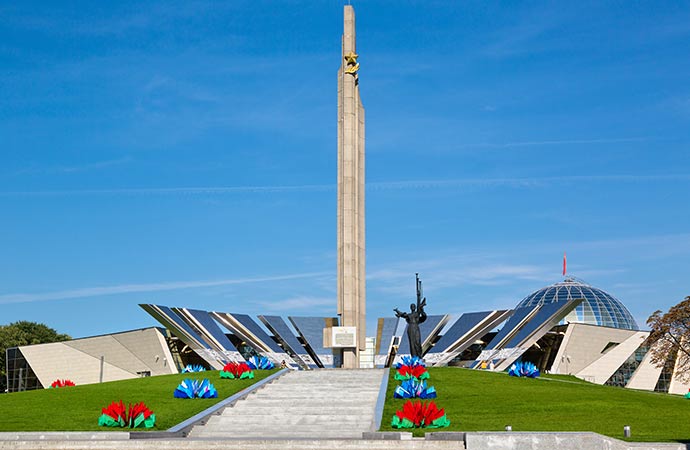
The massive logistical task of moving the vast collection of exhibits forming the basis of this magnificent museum from its former location in Oktyabrskaya Square to its new home here in Pobyedy Park was completed on the occasion of a hugely symbolic opening ceremony in the presence of none other than heads of state Lukashenko and Putin on 2 July 2014, the eve of Independence Day and the 70th anniversary of the country’s liberation from Nazi occupation. Quite rightly, the President and the country as a whole regard the events of the Great Patriotic War with enormous significance, to the extent that they dominate the national psyche even today. Around 8,000 artefacts out of a collection in excess of 145,000 are displayed in 28 exhibits over ten rooms, each of which is crammed with memorabilia. Documentary films are on a constant loop and from time to time war veterans are present to recount their experiences.
Holy Spirit Cathedral
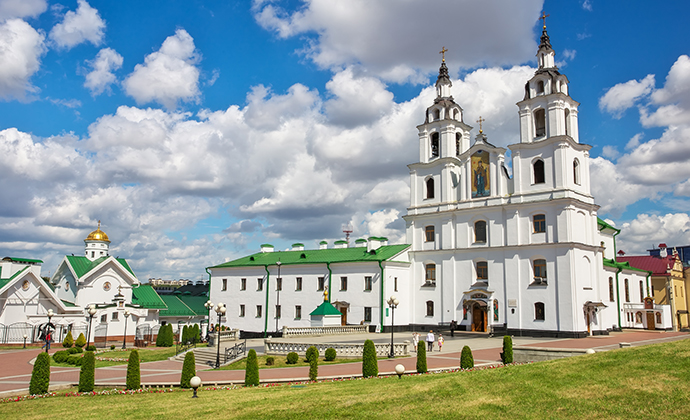
Another of the city’s iconic landmarks, this splendid Eastern Orthodox Baroque cathedral on the edge of Svobody Square was originally constructed between 1642 and 1687 as a Roman Catholic monastery of the Bernardine Order, and part of the monastery complex remains. Ravaged by warfare and long in disuse through damage and disrepair, it was eventually passed to the Russian Orthodoxy and consecrated to Saints Cyril and Methodious in 1860. After the 1917 Revolution it first became a gymnasium for the fire service, then a repository for documentary archives and later a grain store. It is also said that it was used as a political prison. During the entirety of its chequered history it has benefited from many phases of renovation following damage and periods of closure. It is now one of the last surviving monuments of Old Minsk and an enduring image of its history. It houses a number of impressive icons, including that of Our Lady of Minsk, which is said to have miraculously appeared on the bank of the Svislach River in 1500. It is an essential ‘must-see’, with a good souvenir shop.
Island of Tears
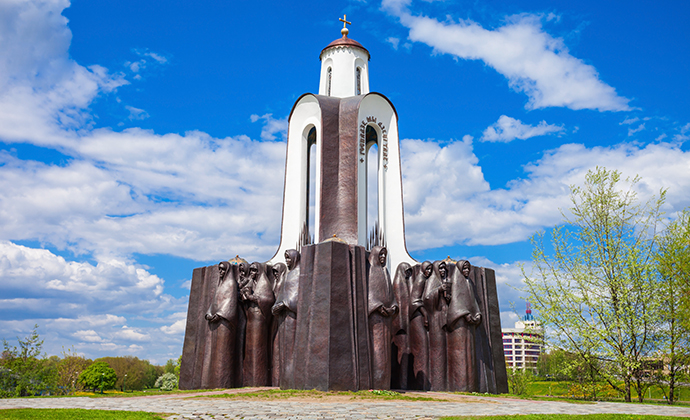
Situated on the Svislach River directly opposite Old Town and inaugurated on 3 August 1996, this is a commemorative memorial to the fallen in the USSR’s ill-fated and disastrous Afghanistan campaign (1979–88). The central feature is a chapel upon the walls of which bleak and harrowing images of bereaved widows and mothers are sculpted, all waiting in vain for their loved ones to return. Inside are four altars bearing icons, together with small shrines dedicated to the fallen from each of the country’s administrative oblasts, their names listed on the walls. In the centre, memory bells have been lowered into a sunken recess containing soil from a number of graves, along with a sealed capsule containing soil from the fields of battle in Afghanistan where some of the nation’s sons fell. This is a highly symbolic and ritualistic gesture, often to be found at memorial locations in this country. Nearby is the statue of a doleful angel in mourning, weeping because he could not save the boys’ lives.
Troitskoye (Trinity) Suburb
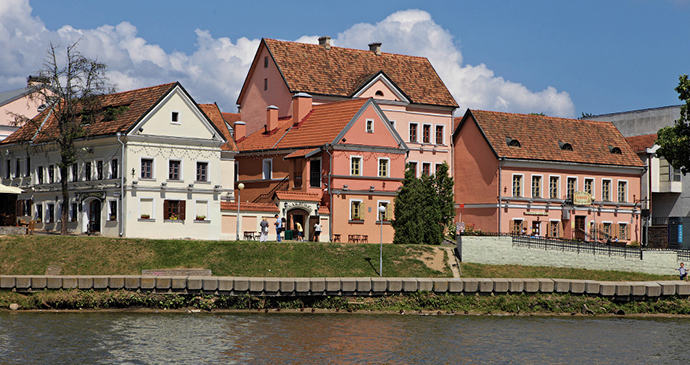
Famous for its bars and taverns since the 13th century, this attractive historic area down by the Svislach River (and on the opposite bank to Upper Town) is known as ‘Old Town’. It’s mostly a reconstruction, although there are those in this city who will tell you indignantly that what you see is wholly original. The truth is likely to lie somewhere between the two, so let’s say that the original buildings here have been substantially and sympathetically renovated. Certainly, the works undertaken to the brightly coloured two- and three-storey buildings during the 1980s and subsequently have been tastefully accomplished, enabling the visitor to experience the city as it existed a century or so ago. Then, the dwellings were of stone and the streets were cobbled. This was a non-aristocratic part of the city, housing factory workers, peasants, craftsmen, traders, low-rank civil servants, military personnel and the petty bourgeoisie. Today, their successors are the owners of the offices, shops, cafés, bars and restaurants that occupy the buildings here.
Gorky Park
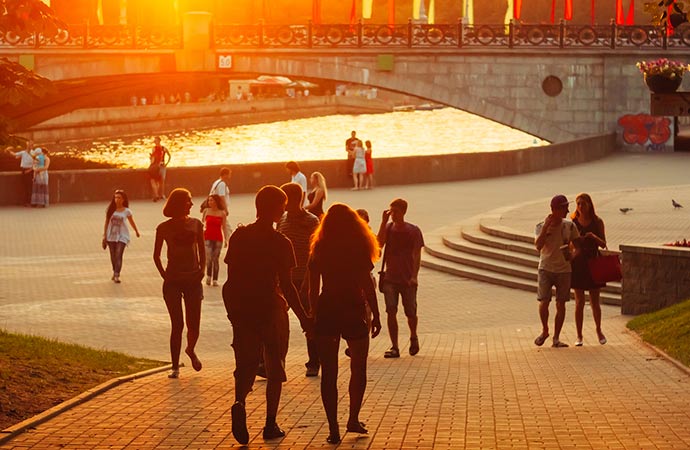
Here for over 200 years and originally the oldest of the governor’s gardens in the city, this lovely park is situated on the banks of the Svislach River. The abundance of manmade entertainment features are clearly designed with children in mind (particularly those at the top of the park by the Ferris wheel, where you will find rides, candy floss, ice cream and cheap toy stalls), but don’t think that there’s nothing for adults here, as its generally attractive and relaxed ambience has more to do with the natural environment. There are groves of lime and maple trees that have stood for a hundred years or more, along with rare cedars and pines. While you’re here, look out for the statue of Maxim Gorky in comfortable repose on a bench near to the central gate (erected in 1981).
National Library
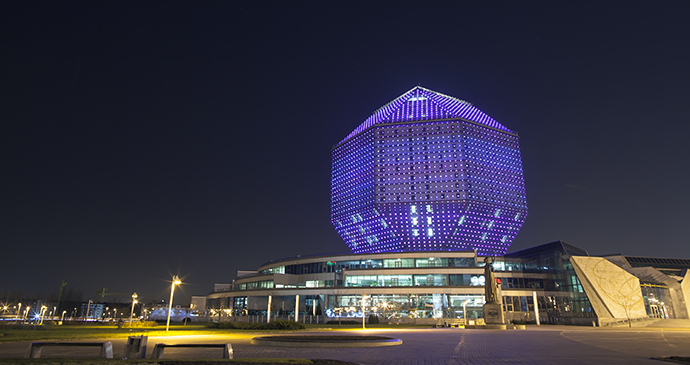
Opened by the President himself on 16 June 2006, this most unusual building makes for a really eye-catching sight in all of its futuristic splendour. The correct term for its geometric shape is (apparently) a rhombicuboctahedron. Whatever the technicalities, it’s quite a sight. Located on Nyezalyezhnastsi Avenue and a little out of town on the main thoroughfare into the city from Minsk National Airport, it dominates the skyline for miles around, particularly when it is illuminated in a dazzling display of colour at night, although the construction of new developments in the vicinity is beginning to encroach upon it. Some 14 million books have now been moved here. The English pages of the library’s website are extremely informative, so undertake some research on this quirky feature in advance then stop off on your travels (it’s a 5-minute walk from the Moskovskaya metro station) for some great photo opportunities (while it’s still standing). There is an indoor observation platform on the 22nd floor and it’s also possible to venture outside although, at 73m above the ground, you will need a head for heights. It’s well worth it, because the views over Minsk by night and by day are unsurpassed.
Feeling inspired to take a trip to Minsk? Check out our guide:
